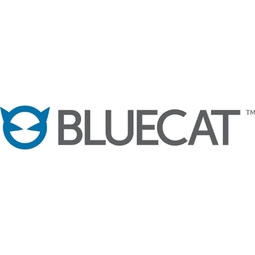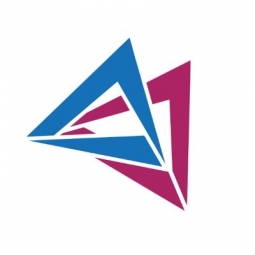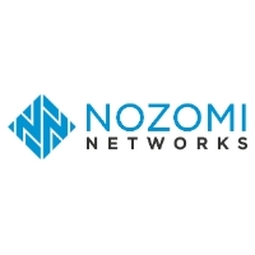BlueCat Networks
The Power of DNS
Overview
|
HQ Location
Canada
|
Year Founded
2001
|
Company Type
Private
|
Revenue
$10-100m
|
|
Employees
201 - 1,000
|
Website
|
Twitter Handle
|
Company Description
BlueCat IP Address Management, DNS and DHCP solutions provide the foundation for elastic networks that scale and adapt to the ever-changing demands placed on your infrastructure by consolidation, expansion and modernization. BlueCat helps enterprises, government agencies and telecom service providers in many areas, ranging from BYOD and virtualization to cloud, software-defined networking and the Internet of Things.
Key Customers
CSC, MUSC, Universit?t Salzburg, PNC Bank
IoT Snapshot
BlueCat Networks is a provider of Industrial IoT infrastructure as a service (iaas), application infrastructure and middleware, cybersecurity and privacy, networks and connectivity, and automation and control technologies, and also active in the electronics, finance and insurance, healthcare and hospitals, pharmaceuticals, and transportation industries.
Technologies
Use Cases
Functional Areas
Industries
Services
Technology Stack
BlueCat Networks’s Technology Stack maps BlueCat Networks’s participation in the infrastructure as a service (iaas), application infrastructure and middleware, cybersecurity and privacy, networks and connectivity, and automation and control IoT Technology stack.
-
Devices Layer
-
Edge Layer
-
Cloud Layer
-
Application Layer
-
Supporting Technologies
Technological Capability:
None
Minor
Moderate
Strong

Supplier missing?
Start adding your own!
Register with your work email and create a new supplier profile for your business.
Case Studies.

Case Study
Global Deployment of IPAM at Top Tier Pharmaceutical Company
This large pharmaceutical company was facing the following challenges: - Solidify the network as the infrastructure across which their intellectual property is developed, quality-assured and delivered to market while enhancing global network security, speed and agility. - Better manage the process of merging acquired companies into the main corporate network. - Reduce business risk by implementing role-based access, full change tracking and the replacement of fragmented, spreadsheet-based management of IPAM data. - Increase the ROI on network-associated IT investments, such as virtualization, cloud and SDN.

Case Study
The Medical University Simplifies Network Management with BlueCat
With nearly 3,000 students in six colleges, 1,500 full and part-time teaching staff and a 750-bed medical center, the Medical University of South Carolina (MUSC) is the only comprehensive academic health center in South Carolina. MUSC offers educational programs in the biomedical sciences, dentistry, health professions, medicine, nursing and pharmacy. Each year, MUSC admits almost 33,000 patients to its hospitals, while its outpatient facilities serve 800,000 patients. MUSC’s network spans 30+ remote sites and its IP address space is comprised of approximately 30,000 IP addresses. The network must support the diverse needs of both the hospital and university, as well as the intensive demands of medical researchers for online collaboration.

Case Study
Scalable Global Routing for Hybrid Cloud in the Insurance Industry
A multinational insurer had heavily invested in Azure five years ago and was now facing a challenge with cloud expansion. The company had around 20 application sites and over 450 user sites to interconnect, and it wanted to maintain seamless operations. More importantly, it wanted to ensure consistent policy enforcement, security, and risk management across its entire hybrid estate. The security and risk team had mandated the use of private IP for internal network resources. However, the cloud team, without fully understanding the networking implications, deployed Private Endpoints in Azure to secure the IP. This made it impossible to resolve DNS and ensure connectivity between data center resources and Azure DNS zones. The cloud team realized that they could not meet both their security and scalability requirements using their Azure toolset alone.

Case Study
Scalable Automation Initiatives in the Healthcare Industry: A Case Study
The healthcare network, a 129,000-person organization, was facing a significant challenge in scaling their automation initiatives. The network's small team of professionals was struggling to maintain control over their DNS, DHCP, and IP address management (DDI) services. They were using Powershell scripts to interface with BlueCat’s API, which initially proved the value of automating DDI services. However, as the project grew, the team began to encounter scalability issues. The team was concerned about the execution of code in multiple places and the need to establish some order to manage the growing complexity.

Case Study
Global Hybrid and Multi-Cloud Visibility in the Manufacturing Industry: A Case Study
The multinational manufacturer was grappling with a complex and unmanageable network infrastructure due to the presence of thousands of subscriptions on multiple clouds. The company's network was organized to support innovation across various verticals, but the lack of visibility into the cloud subscriptions posed a significant challenge. The cloud and networking teams needed to manage the allocation of IP addresses and namespaces to avoid conflicts and respond securely to queries across on-premises and the cloud. They also needed to track usage for service health, security, and compliance purposes. However, the cloud service providers (CSPs) were not cooperative in providing the multi-cloud visibility they required.

Case Study
Medical Technology Company Streamlines Operations with BlueCat's Network Automation
A leading medical technology company with nearly $20 billion in annual revenue and over 70,000 employees worldwide faced a complex challenge in managing network connections between its medical devices and service staff. The company had recently connected all its devices to the internet for remote diagnostics and updates, but this introduced several issues. Firstly, under the Health Insurance Portability and Accountability Act (HIPAA), all connections between medical devices and the company’s servers had to be encrypted, requiring the creation and management of separate VPN tunnels for over 15,000 field-deployed devices. Secondly, the devices, deployed in various medical centers and clinics, were assigned IP addresses by the network teams of each facility, often without coordination, leading to potential IP address conflicts. Lastly, the company’s network infrastructure, shaped by multiple mergers, acquisitions, strategic initiatives, and partnerships, was complex and difficult to manage, especially with the recent adoption of AWS cloud for much of its internal compute.
Case Study
Case Study: Medical Technology Company
The medical technology company faced several challenges in managing network connections between medical devices deployed in the field and the company’s service staff. The company had to ensure compliance with the Health Insurance Portability and Accountability Act (HIPAA), which required all connections between medical devices and the company’s servers to be encrypted. This involved creating and managing separate VPN tunnels for over 15,000 field-deployed devices. The company also faced network conflicts as the devices relied on the IT infrastructures of the medical centers and clinics where they were deployed. The devices were assigned IP addresses by the network teams of each facility, usually without any coordination. This introduced the potential that devices in different facilities would be assigned the same IP address, making remote monitoring and maintenance much harder to track. The company’s network infrastructure was complex due to multiple mergers, acquisitions, strategic initiatives, and partnerships. Maintaining visibility into the DNS of this complex enterprise was a significant challenge.
Case Study
The Medical University of South Carolina Simplifies Network Management with BlueCat
The Medical University of South Carolina (MUSC) is a comprehensive academic health center with nearly 3,000 students, 1,500 teaching staff, and a 750-bed medical center. The university's network spans over 30 remote sites and comprises approximately 30,000 IP addresses. The network must support the diverse needs of both the hospital and university, as well as the intensive demands of medical researchers for online collaboration. The number of IP-connected devices on the network is growing exponentially, including smart phones, tablets, and specialized healthcare devices like wireless IV pumps. In addition, security cameras and door locks that used to be hard-wired are now IP-enabled. To maintain the reliability of the network and better serve its users, MUSC needed an efficient way to manage, automate, and delegate day-to-day network administration tasks.
Case Study
TYROLIT Delivers Resilient DNS and DHCP with BlueCat; Looks Ahead to IPv6
TYROLIT, a technology-driven manufacturer and one of the world’s largest producers of grinding, cutting, drilling and dressing tools, as well as machines for the construction industry, experienced a serious crash of its Microsoft DHCP server in January 2010. This crash impacted its operations and caused the company to begin looking for a more resilient, hardware-based DNS and DHCP solution to replace its Microsoft DHCP servers. The company's network spans numerous remote sites worldwide and encompasses some 15,000 IP addresses. Any outage can cause production delays that cost the company money and impact its reputation, which makes DNS/DHCP resiliency and uptime a major concern.
Case Study
German Grocery Giant, Edeka SouthWest, Deployed a Centralized, Automated BlueCat IPAM System
Edeka SouthWest, one of the largest food producers, distributors, and retailers in Germany, was facing challenges with its expanding IT infrastructure. The company's IT department had deployed many devices on the company’s network to keep pace with its expanding ERP system. Each device needed its own IP address. Since the IT team managed IP addresses manually with spreadsheets, the group struggled to keep track of IP data. The company relied heavily on its mission-critical technologies, such as its ERP solution. Any downtime could mean lost customers and revenue. Therefore, the spotlight was squarely focused on the IT department and service desk to ensure that its network always functioned at peak performance, IP address data was always accurate and valid, and systems were always available.
Case Study
ProSiebenSat.1 Produktion Trusts BlueCat to Support its State-of-the-art Production and Multimedia Services
ProSiebenSat.1 Produktion, a subsidiary of ProSiebenSat.1 Media AG, offers comprehensive services for the production and multimedia distribution of TV content. The company was using a rudimentary IP Address Management (IPAM) system that was primarily used for documentation and did not enable consistency checks. The system was outdated and no longer met ProSiebenSat.1 standards. The company was looking for a modern IPAM system that would guarantee improved processes and would be both flexible and upgradable. It was also planned that the group’s existing Windows servers would eventually be integrated into the IPAM system and managed centrally.
Case Study
BlueCat Helps Cologne Bonn Airport Redesign its Network Architecture to Improve IPAM, Gain Visibility and Streamline Processes
Cologne Bonn Airport, one of the largest commercial airports in Germany, was facing challenges with its home-grown network. The rapid growth in Wifi connectivity from personal mobile devices and greater use of IP-enabled devices, such as security cameras, dramatically increased network demand. In addition, the airport added many IP-based services to improve the customer experience. With multiple DNS zones, differing technologies, and a segregated network access team, the airport lacked a standardized network configuration or centralized visibility. The airport's network team turned to Axians, a German technology company, for guidance on the project.
Case Study
BlueCat helps W&W Informatik seamlessly transition from previous DDI solution, increasing productivity and eliminating down-time
W&W Informatik, a German IT company, was facing challenges with its previous DDI vendor. The outdated version of the solution they were using had limited functionality, poor data consistency, and major issues handling high volumes of DDNS transactions. These limitations reduced the performance, reliability, and availability of the solution, hindering W&W’s productivity. Periodically, all VOIP phones would reboot causing the solution to fail, resulting in outages of the VOIP infrastructure. W&W’s network is heavily distributed across Germany and with the company’s rapid growth, they must deal with the challenge of offices frequently opening and sometimes closing. Each new office requires the setup of a small network. To support this rapid growth, W&W needed to find a DNS, DHCP and IP Address Management (DDI) solution that would grow with its network. Their network needs have evolved since their legacy solution was initially rolled out – the company’s focus has shifted to private cloud implementation, VMWare automation and server automation – and their solution was no longer able to meet their requirements. Additionally, their previous DDI vendor did not offer the ease of upgrade and support that W&W was looking for.
Case Study
Hochschule Ostwestfalen-Lippe University Simplifies and Automates Network Management with BlueCat6
Hochschule Ostwestfalen-Lippe University (HS-OWL) in Germany was facing challenges with its network environment. The university had a limited IPv4 address space and was using an open source tool to document its IP addresses and networks. However, there was no integration between this tool and the university's DNS and DHCP core network services. The management and maintenance of these separate tools were time-consuming for the IT staff. The lack of integration also increased the risk of a network configuration error causing an outage that would directly impact the university's students, faculty, and staff. The university's network encompasses about 10,000 active IP addresses on campus and serves the needs of some 6,000 students and 600 staff. The DNS, DHCP, and IP Address Management (IPAM) solution selected would have to be scalable to support network growth and include a flexible API to enable integration with the university's existing in-house and custom-built network management tools.
Case Study
BlueCat Provided Support and Expertise, as well as a Resilient, Scalable, and Redundant Network to University College Dublin
Over the years, University College Dublin (UCD) built its own DDI infrastructure, consisting of BIND DNS and DHCP as well as several Red Hat servers. They also created an in-house IPAM solution that allowed its network team to easily create address ranges and edit IP data. However, the network was growing rapidly and placing more demands on the current system. The growth and increasing demand on the network put pressure on the already-tight resources, and the University did not want to be in a precarious position where its networks management group was stretched too thin. As resources left the team, it was becoming harder and harder to run the in-house solution. It made logical sense to move to a managed commercial DDI project where they had robust expertise and extensive support. In addition, UCD was in the process of upgrading to IPv6. They were operating a dual stack and had IPv6 running on a few test networks. As they looked for a new IPAM product, this was something that had to be addressed.
Case Study
Alesund kommune Simplifies Network Management and Eliminates DHCPRelated Downtime with BlueCat
Alesund kommune, a Norwegian municipality with a population of 42,982, was using a combination of Windows 2000 server, Linux and BIND to manage its DNS and DHCP. However, the lack of redundancy for DHCP made it impossible to ensure the robustness of the network. The municipality occupies seven of the outer islands in the county of Møre og Romsdal, making it a highly-dispersed environment. Alesund wanted to find a DNS/DHCP solution that would not only eliminate potential network downtime, but would also simplify network management and improve administrator and user productivity while simultaneously decreasing the associated costs of managing its distributed network. The municipality has approximately 3,000 nodes in the network, spread over about 200 different subnets, with most of the clients being Windows and PXE (Pre-Boot Execution Environment) thin clients. With Windows 2000 server, it was impossible to divide all the nodes up into different classes within subnets, which made the system extremely difficult to monitor and manage.
Case Study
The Universität Salzburg Implements a Comprehensive DNS, DHCP and IP Address Management (DDI) Solution with BlueCat
The Universität Salzburg, with 16,500 students and around 2,700 employees, faced a significant challenge when the Universities Act 2002 was implemented, granting greater autonomy and self-determination to Austrian universities. This change necessitated a routine replacement of the hardware for the existing DNS server infrastructure. The university's Project Manager, Mr. Thomas Wenniger Dipl. Ing. (FH), sought the expertise of schoeller network control, a technology distributor with experience in networking and infrastructure. The discussions that followed presented options for a comprehensive DNS, DHCP and IP address management (DDI) solution. BlueCat, a leading provider of DDI solutions, was recommended for evaluation. The university had concerns about replacing Microsoft DNS, but the extensive workflow opportunities offered by BlueCat's DDI products for the allocation and management of IP addresses by the IT helpdesk and network administrators sparked interest.
Case Study
Case Study: U.S. Government Laboratory
The Laboratory conducts scientific research on highly sensitive technical areas, and as such its network requires a unique architecture. The vast majority of the Laboratory’s workforce is comprised of U.S. citizens, but foreign scientists also work at the lab through cooperative projects and scientific exchange programs. The Laboratory’s network administrators segmented their network to ensure that information was unable to move from the protected enclave of U.S. citizen workers to the enclave used by foreign nationals. This created an administrative headache, however, as the DNS for both areas had to be managed separately under the Microsoft DNS the lab was using. Spreadsheets were used to keep track of IP addresses and host records, but this was hardly a failsafe method – manual errors frequently caused network outages and increased overall operational risk. Split administration also lengthened the time it took network administrators to respond to help desk tickets. With a constant flow of foreign researchers and guests, adding and deleting host records took a great deal of time and energy away from more pressing tasks.
Similar Suppliers.

Supplier
SoftDEL
SoftDEL is a technology company enabling global Industrial OEMs to engineer smart and connected products that power the “Internet of Things (IoT)”. We provide IP’s and product design engineering services across service lines; Smart Building, Smart Lighting, Industrial Automation & Automotive. With headquarter in Stamford, CT, USA, we have presence across Europe, Japan, India & Korea market, SoftDEL’s value proposition is to help Industrial OEMs to - Bring differentiated products in smart and connected world - Reduce total cost of ownership - Provide innovative and flexible business models

Supplier
Nozomi Networks
Nozomi Networks is revolutionizing Industrial Control System (ICS) cybersecurity with one end-to-end solution that delivers real-time cybersecurity and operational visibility. Since 2013 the company has innovated the use of Machine Learning and Artificial Intelligence to meet the unique challenges of critical infrastructure operations. Deployed in some of the world’s largest industrial installations their technology delivers real-time industrial network visualization, asset management, vulnerability management, process anomaly and intrusion detection. Their global customers benefit from enhanced cybersecurity, improved operational efficiency and maximized uptime in one passive solution. Nozomi Networks is headquartered in San Francisco, California.

Supplier
KORE Wireless
Founded in 2003, KORE is the world’s largest managed network services provider specializing in Internet of Things (IoT) and Machine to Machine (M2M) markets. KORE provides the critical wireless connectivity empowering application, hardware and wireless operator partners to rapidly bring new IoT and M2M innovations to market, with millions of active on-network units in more than 180 countries. KORE delivers choice, reliability and global native coverage through multi-carrier and Tier 1 carrier cellular and satellite network services – including LTE, GSM and CDMA - as well as advanced applications to easily manage IoT connected devices. KORE’s recent acquisition of Wyless makes the company one of the six largest providers of M2M/IoT services globally, inclusive of carriers. Together, the combined company connects over 6-million devices around the world with leading technology, providing guaranteed costs, visibility and control of mission critical applications.

Supplier
Nutanix
Nutanix makes infrastructure invisible, elevating IT to focus on the applications and services that power their business. The Nutanix enterprise cloud platform leverages web-scale engineering and consumer-grade design to natively converge compute, virtualization and storage into a resilient, software-defined solution with rich machine intelligence.

Supplier
Cradlepoint
Cradlepoint is the global leader in cloud-delivered wireless edge solutions for branch, mobile, and IoT networks. The Cradlepoint Elastic Edge™ vision—powered by NetCloud services—provides a blueprint for agile, pervasive and software-driven wireless WANs that leverage 4G and 5G services to connect people, places and things everywhere with resiliency, security, and control. More than 25,000 enterprise and government organizations around the world, including 75 percent of the world’s top retailers, 50 percent of the Fortune 100, and first responders in 10 of the largest U.S. cities, rely on Cradlepoint to keep critical branches, points of commerce, field forces, vehicles, and IoT devices always connected and protected. Major service providers use Cradlepoint wireless solutions as the foundation for innovative managed network services. Founded in 2006, Cradlepoint is a privately held company headquartered in Boise, Idaho, with a development center in Silicon Valley and international offices in the UK and Australia. Learn more at cradlepoint.com or follow us on Twitter @cradlepoint.







